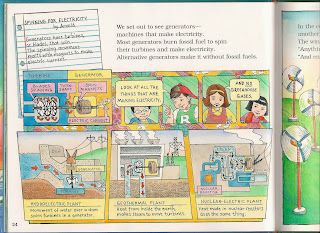PORTFOLIO WORK YEAR 6 ELECTRICITY
PORTFOLIO
WORK
- It will be done at home.
- It is individual work but you can use
dictionaries or ask for your peers’ advice.
- The teacher will not mark that work:
you will go through it in June and
then you will be able to change it, rewrite it...
- You will design your project. You can
do it either on the computer or in pen.
1- Write an account about the
electricity topic we have just finished that includes:
Symbols, diagrams, types of circuits, how
they work and everything else that you think it might be important to recall.
(max 2 pages)
2- Write about the house you have
made. Stick on a photograph of you and your house with an account about how you
made the house using connectives: First, next, then...finally.
If I built my house again this is what I
would change: Instead of using this, I would use that... I would add a...
This is what my new house would look like.
3- Using your knowledge of
electrical circuits, design a device, toy, “thing” using an electrical circuit.
You can use buzzers, bulbs, motors...
Use the house worksheet as a plan for your
project.
If you like, build a model of your
invention.





























